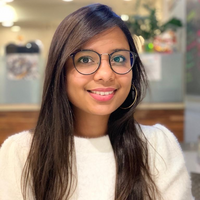Subject to change.

Subject to change.

Dr. Saloni Agarwal completed her PhD from the University of Texas at Dallas focused on Multimodal Medical Image Analysis Using Machine Learning, and joined Google after graduation. She is interested in solving pathology image-related problems using AI/ML and computer algorithms. She has been working with the Health AI Pathology team on developing foundational models for the histopathology tasks.